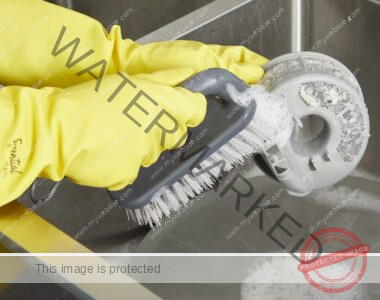
Project Overview
working time:about 2 hours for a skilled DIYer
total time: up to 4 hours
skill level: intermediate
estimated cost: $185 to $625
before starting
Major home improvement chains and hardware stores offer prehung storm door Kits in the most commonly used door sizes: 30, 32, 34 and 36 inches. If your door frame is large, you can order a custom door or purchase an extender kit to fill the extra space between the door and frame.
Storm door kits are usually sold with installation and operating hardware to make hanging the storm door easy. handle and locks However, these are often sold separately. The storm door attaches to the frame with hinges and has a hydraulic or pneumatic closure that pulls and closes the door at a controlled rate.
Today’s storm doors have much more style than the clunky plain white, black or gray designs of years past. With a variety of fashionable colors, screen and glass options and decorative effects to choose from, homeowners can easily choose a storm door that complements the style of their home’s exterior and enhances the curb appeal.
Steps to Install a Storm Door

There are three basic steps to installing a storm door. These are relatively universal across all brands and models, but you should always follow the installation instructions for your specific storm door.
Step 1: Attach the Rain Cap and Hinge-Side Z-Bar.
Start by installing a rain cap (also called a drip cap) at the top of the door frame. This narrow rail sits on top of the frame and above the door panel to prevent rain from leaking between the storm door and the entry door. The rain cap usually attaches with a screw.
Then cut and install the hinge-side Z-bar: Place the Z-bar against the opening on the hinge side of the door and mark the top. Measure the height of the door opening, from the bottom of the rain cap to the top of the sill. Mark a cutoff line on the hinge-side Z-bar and cut with a handsaw or hacksaw, with a slight slope outward to accommodate the slope of the door frame. Attach the hinge-side Z-bar to the door with screws.
Step 2: Hang the Storm Door.
With the door in the closed position, slide it open and press the hinge portion of the door tightly against the door jamb, making sure that the top of the hinge-side Z-bar is about a quarter inch from the bottom edge. Is. Of drip cap. Check to make sure the door is plumb And level, and adjust if necessary. Secure the hinge side with the screws.
Make sure the door opens and closes properly, then measure and cut the handle-side Z-bar the same way you measured and cut the hinge-side Z-bar. Follow the manufacturer’s recommendations for how much expansion gap to leave between the Z-bar and the door (most recommend between ⅛ and ¼ inch to allow for expansion and contraction of the door).
Double-check door operation and secure the handle-side Z-bar with screws.
Step 3: Attach Storm Door Hardware.

Some storm doors come with handles and a lockset, although many require purchasing the hardware separately. Follow the manufacturer’s instructions to properly install the handle and lockset, checking to make sure they do not interfere with door operation.
Next, install door sweep weatherstripping under the door. This will usually slide onto the bottom of the door, although some may also come with screws. Cut off any excess.
install door closer And adjust the closure speed by loosening or tightening. Some closures come with a safety chain; You should install the safety chain so that it allows the door to open 90 degrees.
When to Call a Professional for Storm Door Installation
Although installing a storm door is a DIY project for some people, there are some situations in which hiring a professional is a better option. expect Cost of Professional Storm Door Installation Between $250 and $450 per door (labor only) depending on the complexity of the job. Here are some reasons why you might not want to approach storm door installation as a DIY:
- framing issues: If the door frame is damaged, uneven, or needs resizing, a professional can ensure proper alignment and safe installation.
- complex content: Homes with non-standard siding materials such as brick or stone may require special tools or expertise for installation.
- lack of experience:If you’re not particularly skilled or comfortable using tools, a professional can handle the job quickly and safely.
- custom or oversized doors: Unusual door shapes or custom designs may require professional fitting to avoid installation problems.
- weatherproofing: A professional can ensure optimal sealing and weatherproofing, which is especially important in areas that experience extreme weather conditions.
questions to ask
A handy homeowner can install a prehung storm door in about 4 hours or less. If your door needs to open using an extender kit, you may want to plan on an additional 30 minutes to an hour. Many home centers also offer professional storm door installation.
Today’s prehung storm door kits come with a frame and are offered in popular and standard door widths, including 30-, 32-, 34- and 36-inch sizes. Double-door kits and custom-order sizes are also available.
Many storm doors are made from a wood core covered with vinyl, PVC, composites or aluminum. These wood-core doors offer increased durability and insulation, but when subjected to extremely harsh conditions, the wood core can rot over time. Aluminum, on the other hand, will not rot or corrode, although it may pit and show scratches, and is generally more expensive. Each material has benefits and drawbacks, so buyers need to balance cost, aesthetics, durability, and desired features.



